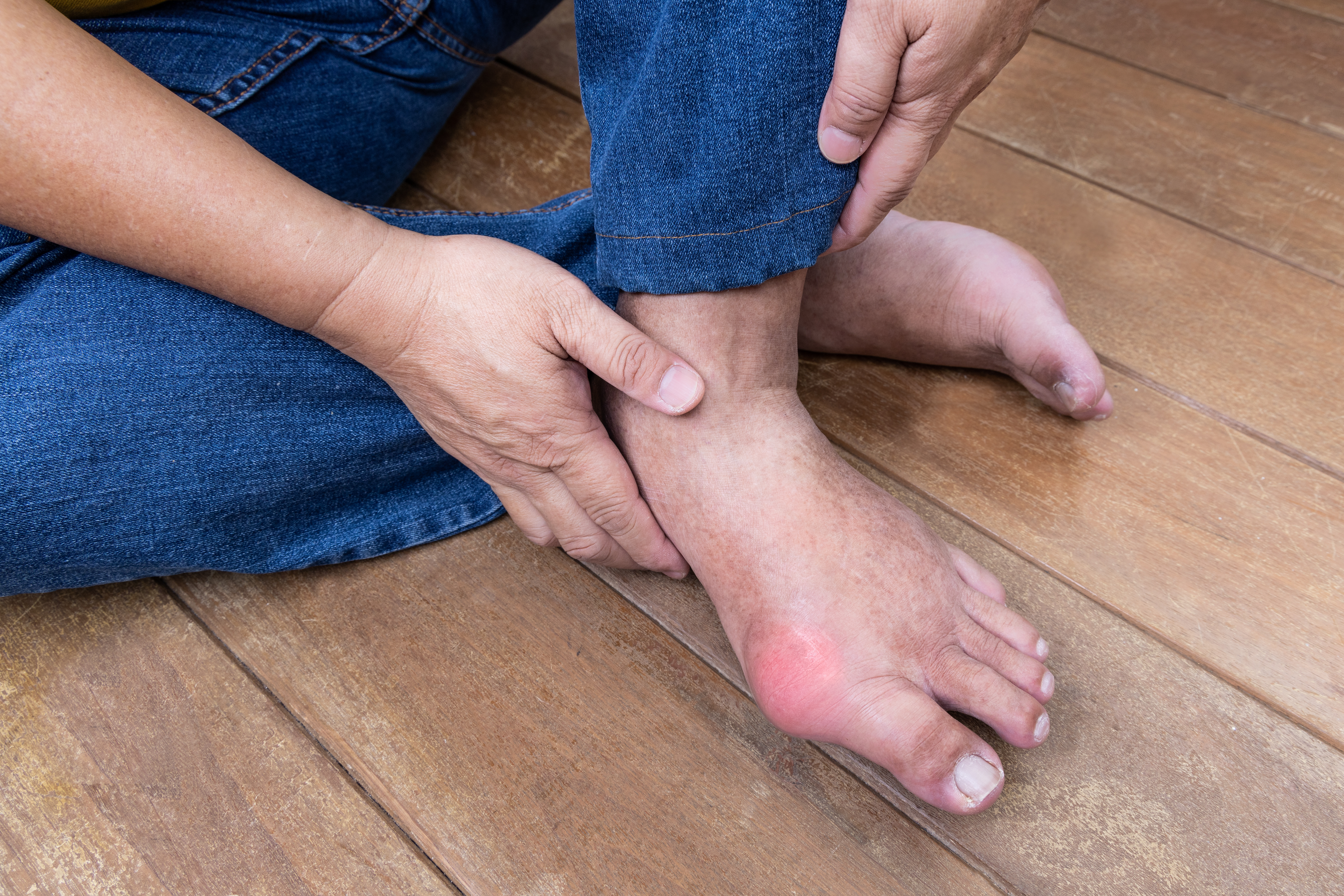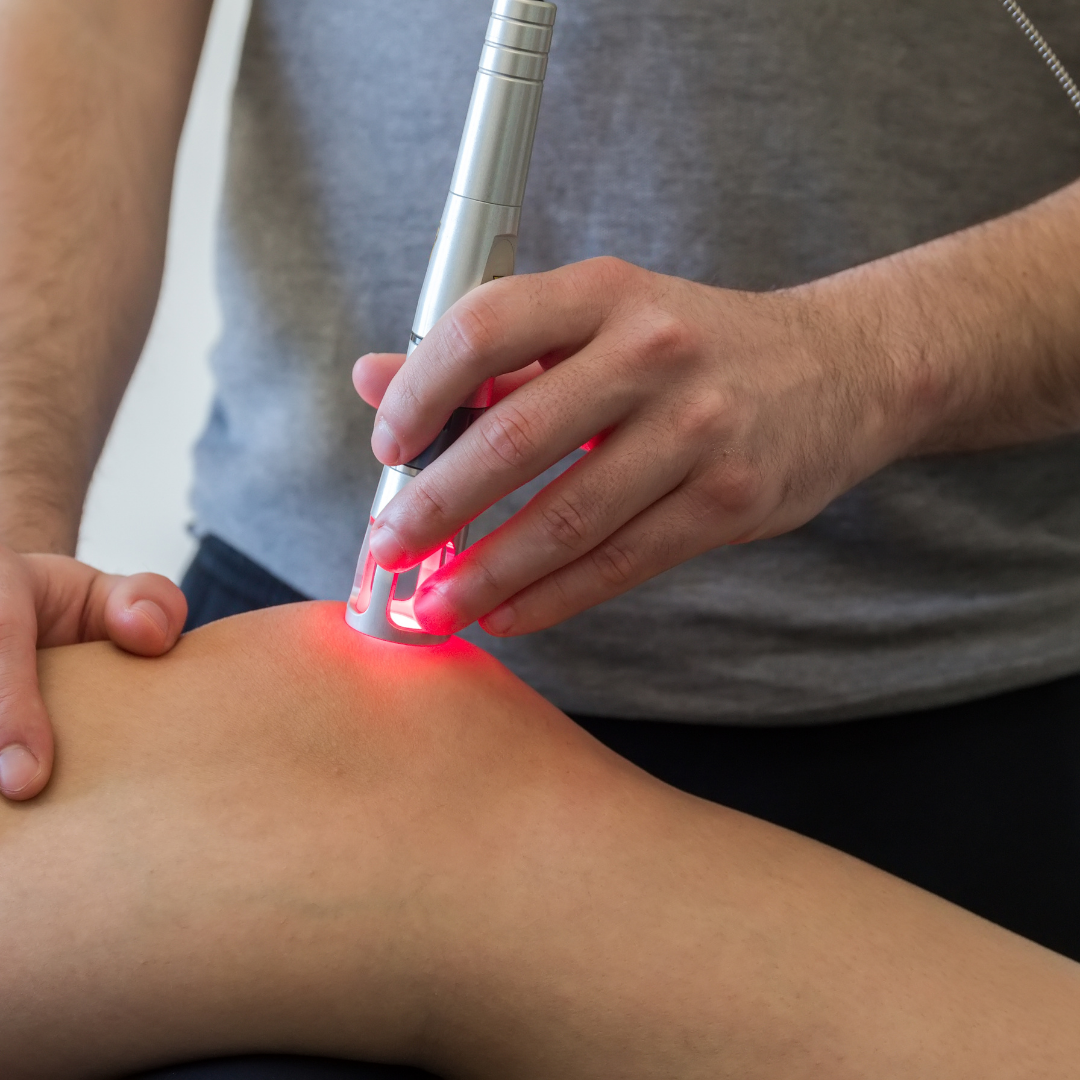Gout is a type of inflammatory arthritis that results from a high concentration of uric acid in our blood. Uric acid builds up in our bodies from the food we eat as part of a regular diet. It’s a by-product of our bodies breaking down purines – chemicals naturally found in our food. Sometimes, the kidneys have difficulty processing and getting rid of uric acid at a normal rate, and sometimes the production of uric acid is just too high. Either way, we’re left with much more uric acid left in our blood than we should normally have. A gout attack happens when the uric acid crystallises in a joint and for 90% of those with gout, this will happen at their big toe among other joints. This is because uric acid crystallises in cooler temperatures and our feet are often the coolest part of our body. It is these stiff crystals that can cause severe pain and discomfort.

Long ago, gout was referred to as the ‘Rich Man’s Disease’ because it was noted that gout primarily affected people that were wealthy. This is because certain (expensive) foods contain much higher levels of purines – like red meats, shellfish, red wine and beer – which the rich could afford much more of. This still holds true today, in the context that if you’d like to lower your chance of having a flare-up of gout, you should cut back on these more expensive foods.
Gout can feel excruciatingly painful during an ‘attack’ or ‘flare up’. Symptoms generally include:
Aside from consuming high levels of purines, genetic factors also often come into play. That is, if one of your family members has gout, you’re more likely to develop it too. Other factors include diuretic medications, aspirin and niacin (all which impair the body’s ability to remove uric acid from the blood), stress, diabetes, high blood pressure, surgery and obesity, among others. While gout can occur at any age, it typically affects men aged between 30 and 60 years old.
If you haven’t already confirmed a diagnosis of gout with your GP, that’s the first place to start. While gout can’t be ‘cured’, it can be managed to reduce your symptoms and prevent future onset. There are medications available to help with this. Next, we recommend taking small steps to reduce the likelihood of flares such as wearing warm socks and keeping your feet warm. Staying active and exercising (when you don’t have a flare) will help manage other factors that contribute factors to gout, such as obesity, stress and diabetes. If you’re having a flare, make sure you don’t add additional pressure to the joint and that your shoes are helping and not hindering your pain and mobility. Your Podiatrist can help with this by conducting a thorough biomechanical examination of your feet and legs. Any issues identified that may be contributing to your pain or discomfort can be addressed, often with the use of orthotics to help relieve painful symptoms from restrictions in the mobility of your feet.

If you’re unsure whether you should wear walking or running shoes when exercising, this article is for you.
We explain the differences between walking and running shoes and how to determine which one is best for your feet. When it comes to buying a new pair of shoes, most people walk into a store expecting to just “find something comfy.” Then, suddenly, you’re asked: Are you looking for
walking shoes or running shoes? And that’s where the confusion begins. Because for many people, the answer isn’t that simple.
You could walk a lot – to work, around the block, chasing after the kids, or while catching up with friends. You could have also just joined
a gym or registered for the Couch to 5km. Or you could be a walker who just wants the option to go for a run if the mood strikes. So, which
shoe do you pick?

Discover why foot health is so important as we age and how Perform Podiatry supports seniors in staying mobile, independent, and pain-free. From diabetic care to personalised treatment plans, we’re here to help keep your feet happy and healthy, every step of the way.

Discover how Class IV Laser Therapy at Perform Podiatry offers powerful, drug-free relief for foot and ankle pain. Backed by science, this advanced treatment helps you heal faster and move better, without the need for surgery or medication.
Keeping your family on their feet and helping them to walk, run, play and exceed their goals is why we love getting up in the morning.
Ground Floor, One Health Building
122 Remuera Rd, Remuera
Auckland 1050, New Zealand
| MON - FRI | 7:30am – 6:30pm |
| SAT | 8:30am – 4:30pm |
| SUN | Some availability |
Make an Appointment
Online Schedule
Our virtual receptionist is available 24/7 to help with general questions, booking requests, and clinic information, even when our team is busy, or it's after hours.
Whether you're calling us or using our website, you'll get fast assistance any time of day. And if your query needs a personal touch, a member of our team will follow up as soon as possible.